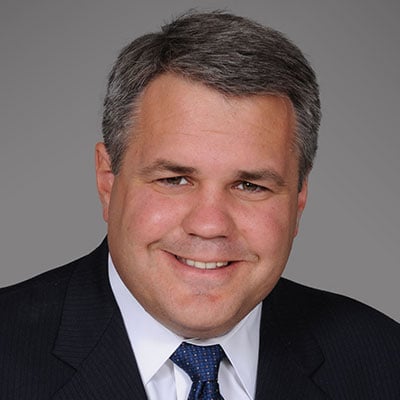DOJ Outlines New Approach to Corporate Compliance Monitorships
Since the early 2000s, the U.S. Department of Justice has required corporate monitors in an increasing number of case dispositions. Regulatory agencies like the SEC and CFTC, as well as state attorneys general and foreign regulators, have followed suit. Although monitors are intended to benefit shareholders by helping companies refine their internal controls, their increased use has attracted growing criticism because of their potentially disruptive effect on corporate activities and frequently runaway costs. Recently, the DOJ has taken steps that appear to acknowledge these criticisms. On October 12, 2018, Assistant Attorney General Brian Benczkowski — in his first major speech since being confirmed — unveiled new guidance that formalizes the factors prosecutors must consider when determining whether to require a monitor. Importantly, this new guidance clarifies that the imposition of a monitor should be “the exception, not the rule.1
Assistant Attorney General Brian Benczkowski’s memo clarifies that the imposition of a monitor should be “the exception, not the rule”
Background
Despite the prevalence of corporate monitors, the DOJ has issued relatively little guidance concerning the situations in which monitors should or should not be required. On March 7, 2008, then-Acting Deputy Attorney General Craig S. Morford issued a memorandum (the “Morford Memo”) that identified priorities for selecting corporate monitors and provided for supervisory review within the DOJ.2 The Morford Memo, however, largely left unaddressed the question of when monitors should be appointed in the first place. On that question, the Morford Memo simply instructed that “prosecutors should be mindful of both: (1) the potential benefits that employing a monitor may have for the corporation and the public, and (2) the cost of a monitor and its impact on the operations of a corporation.3
Although the DOJ issued limited additional guidance regarding the selection process for monitors in the following years,4 Assistant Attorney General Benczkowski’s guidance is the first effort to clarify the Morford Memo’s broad instruction that prosecutors should consider costs and benefits of appointing a monitor.
The Benczkowski Memo reflects an effort by the DOJ to address criticisms of many monitorships, which can be extraordinarily expensive and disruptive
In a speech at the NYU School of Law’s Program on Corporate Compliance and Enforcement, Benczkowski announced new guidance meant to “further refine the factors that go into the determination of whether a monitor is needed.5 This guidance (the “Benczkowski Memo”) is meant to supplement the Morford Memo and requires prosecutors, when evaluating the “potential benefits” of appointing a monitor, to consider:
- “whether the underlying misconduct involved the manipulation of corporate books and records or the exploitation of an inadequate compliance program or internal control systems;”
- “whether the misconduct at issue was pervasive . . . or approved or facilitated by senior management;”
- “whether the corporation has made significant investments in, and improvements to, its corporate compliance program and internal control systems;” and
- “whether remedial improvements to the compliance program and internal controls have been tested to demonstrate that they would prevent or detect similar misconduct in the future.6
There should be no doubt that prosecutors retain significant leverage to force companies to accept monitors in many circumstances
These factors “should favor the imposition of a monitor only where there is a demonstrated need for, and clear benefit to be derived from, a monitorship relative to the projected costs and burdens.7 Thus, “[w]here a corporation’s compliance program and controls are demonstrated to be effective and appropriately resourced at the time of resolution, a monitor will likely not be necessary.8
As Benczkowski explained in his speech, these new factors are designed to recognize that “the imposition of a monitor will not be necessary in many corporate criminal resolutions,” and that, when a monitor is appointed, “the scope of any monitorship should be appropriately tailored to address the specific issues and concerns that created the need for the monitor.9 In other words, monitors should not be appointed for “punitive” reasons.10
Key Takeaways
Trend towards Reducing Regulatory Burdens. The Benczkowski Memo reflects an effort by the DOJ to address criticisms of many monitorships, which can be extraordinarily expensive and disruptive. Although most prosecutors presumably already considered the factors identified in the Benczkowski Memo when deciding whether to recommend a monitor, the Benczkowski Memo makes clear that the default should not be to appoint a monitor, absent demonstrated need. Indeed, Benczkowski expressly stated that monitors should be “the exception, not the rule.11 More so than the factors themselves, this cautionary language may reduce the instances in which monitors are appointed. And even where monitors are appointed, Benczkowksi stressed that the scope of the monitorship should be tailored to address the issues that gave rise to the need for a monitor. Finally, to underscore the DOJ’s sensitivity to runaway monitors, Benczkowski noted the DOJ would act as a “referee” between corporate entities and monitors, and encouraged companies to alert the agency if monitors exceed the scope of their mandates.
Effective Compliance and Remediation May Avoid the Imposition of Monitors. The Benczkowski Memo also demonstrates the importance of companies maintaining strong compliance programs and quickly remediating shortcomings. Doing so may provide a basis to avoid a monitor, since the Benczkowski Memo specifically identifies the importance of remediation efforts in deciding whether to impose a monitor. As it explains, monitors may be unnecessary “[w]here misconduct occurred under different corporate leadership or within a compliance environment that no longer exists within a company.12
Several corporate resolutions announced shortly before the Benczkowski Memo already appear to reflect these principles. Deferred and non-prosecution agreements with SocGen, Credit Suisse and Legg Mason, Inc., for example, expressly declined to impose monitors “based on the Company’s remediation and the state of its compliance program.13 In this environment, corporate investments in compliance and remediation may avoid more costly monitorships in the event a resolution becomes necessary.
There Are Still Significant Risks Associated with Corporate Monitors. Despite the changes that may result from the Benczkowski Memo, there should be no doubt that prosecutors retain significant leverage to force companies to accept monitors in many circumstances. The factors that the Benczkowksi Memo identifies as relevant are subjective, and prosecutors will likely view a company’s compliance program skeptically. Further, the DOJ’s guidance does not affect the SEC, CFTC or any other domestic or foreign regulatory bodies that might decide to impose monitors for different reasons or based on different factors. Companies negotiating with the DOJ will still need to guard against the proverbial “runaway monitor” — and one of their best defenses will be a strong commitment to internal compliance functions, with appropriate reforms in the wake of discovered failings or misconduct.
Conclusion
The Benczkowski Memo represents the first time in over a decade that the DOJ has attempted to provide guidance regarding when to appoint monitors (as opposed to how to appoint them). In certain appropriate circumstances, companies looking to oppose or limit the imposition of corporate monitors may have reason for optimism.
1. Brian Benczkowski, Remarks at NYU School of Law Program on Corporate Compliance and Enforcement Conference on Achieving Effective Compliance (Oct. 12, 2018), available at https://www.justice.gov/opa/speech/assistant-attorney-general-brian-benczkowski-delivers-remarks-nyu-school-law-program.↩
2. Craig S. Morford, Selection and Use of Monitors in Deferred Prosecution Agreements and Non-Prosecution Agreements with Corporations (March 7, 2008), available at https://www.justice.gov/sites/default/files/dag/legacy/2008/03/20/morford-useofmonitorsmemo-03072008.pdf. This memorandum was issued in response to allegations of improprieties in the selection of monitors by the DOJ. See, e.g., Philip Shenon, Ashcroft Deal Brings Scrutiny in Justice Dept., New York Times (Jan. 10, 2008), available at https://www.nytimes.com/2008/01/10/washington/10justice.html.↩
3. Morford Memo, supra n.2, at 2.↩
4. In June 2009, for example, then-Assistant Attorney General Lanny A. Breuer issued a memorandum requiring the creation of a standing committee meant to aid in the selection of monitors, and providing guidance with respect to the selection and functions of monitors. Lanny A. Breuer, Selection of Monitors in Criminal Division Matters (June 24, 2009), available at https://www.justice.gov/sites/default/files/criminal-fraud/legacy/2012/11/14/response3-supp-appx-3.pdf. In May 2010, then-Acting Deputy Attorney General Gary G. Grindler issued additional guidance relating to disputes between monitors and the companies they are assigned to supervise. Gary G. Grindler, Additional Guidance on the Use of Monitors in Deferred Prosecution Agreements and Non-Prosecution Agreements with Corporations (May 25, 2010), available at https://www.justice.gov/jm/criminal-resource-manual-166-additional-guidance-use-monitors-dpas-and-npas.↩
5. Supra n.1.↩
6. Brian Benczkowski, Selection of Monitors in Criminal Division Matters at 2 (Oct. 11, 2018), available at https://www.justice.gov/opa/speech/file/1100531/download.↩
7. Id.↩
8. Id.↩
9. Supra n.1.↩
10. Id.↩
11. Supra n.1.↩
12. Benczkowski Memo, supra n.6, at 2.↩
13. See, e.g. June 5, 2018 Deferred Prosecution Agreement ¶4 (g), United States v. Société Générale S.A., 18 Cr. 283 (DLI), available at https://www.justice.gov/opa/press-release/file/1068521/download.↩
This communication is distributed with the understanding that the author, publisher and distributor of this communication are not rendering legal, accounting, or other professional advice or opinions on specific facts or matters and, accordingly, assume no liability whatsoever in connection with its use. Pursuant to applicable rules of professional conduct, this communication may constitute Attorney Advertising.
© 2018 KIRKLAND & ELLIS LLP. All rights reserved.















